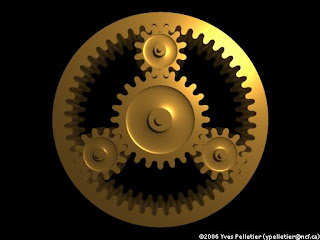Introduction:-
In Electric Discharge Machining process an arc is produced when two current-carrying wires are short-circuited. During this machining process,
a small portion of metals is also eroded away, leaving a small cater. this phenomenon is used in electric discharge machining (EDM). EDM machining process is also known as spark erosion machining.
EDM involves a controlled erosion of electrically conductive materials by the initiation of electrically conductive materials by the initiation of rapid and repetitive spark discharges between the tool and workpiece separated by a small gap. Each electrical spark produces sufficient heat to melt a portion of the workpiece and usually, some of the tooling materials also. Due to rapid heating, the dielectric fluid evaporates in the arc gap which increases the resistance until the arc is interrupted. The associated shock wave and flowing dielectric fluid remove the gas bubbles which later collapse.
In Electric Discharge Machining process an arc is produced when two current-carrying wires are short-circuited. During this machining process,
a small portion of metals is also eroded away, leaving a small cater. this phenomenon is used in electric discharge machining (EDM). EDM machining process is also known as spark erosion machining.
EDM involves a controlled erosion of electrically conductive materials by the initiation of electrically conductive materials by the initiation of rapid and repetitive spark discharges between the tool and workpiece separated by a small gap. Each electrical spark produces sufficient heat to melt a portion of the workpiece and usually, some of the tooling materials also. Due to rapid heating, the dielectric fluid evaporates in the arc gap which increases the resistance until the arc is interrupted. The associated shock wave and flowing dielectric fluid remove the gas bubbles which later collapse.
Electro chemical dissolution is based on the Faraday’s laws, stated as follows:
The amount of electrochemical dissolution or deposition(m) is proportional to amount of charge (Q) passed.
The amount of material deposited or dissolved further depends on electrochemical equivalence (ECE) of the material, that is, the ratio of the atomic weight (A) and velocity (v).
The amount of electrochemical dissolution or deposition(m) is proportional to amount of charge (Q) passed.
The amount of material deposited or dissolved further depends on electrochemical equivalence (ECE) of the material, that is, the ratio of the atomic weight (A) and velocity (v).
Summary of EDM characteristics:
- Mechanics of material removal rate: Melting and evaporation aided by cavitations (spark erosion).
- Medium: Dielectric fluid (generally kerosene).
- Tool material: Cu, Brass, Cu-W Alloy, Ag-W-Alloy, Graphite.
- Wear Ratio: 0.1 to 10.
- Maximum material removal rate (MRR) is 5× 103 mm3/min.
- Specific power consumption: 1.8 W/mm3/min.
- Gap between work piece and tool is 10 to 125 µm.
Advantages:
- L/D ratio as high as 20 can be achieved.
- There is no contact between tool and workpiece so no forces acting in machining. So no residual stresses are generated in machining.
- Out of all the unconventional machining methods, EDM is the one which gives highest MRR,
- Melting and evaporation is the mechanism for chip formation, the mechanical properties of work piece material will not affect the material removal rate (MRR).
- Surface finish produced will be better.
Disadvantages:
- Used only for electrically conductive material.
- Electrode wear is more.
- Re-hardening occurs due to heat generated during machining.
- Not possible to make exact square corners.
Applications of Electric Discharge Machining process:
- Blind cavities and narrow slots in dies, minimum diameter hole can be produced is 0.13mm.
- L/D ratio is as high as 20 can be done. So, due to this, EDM is particularly useful in machining of small holes, orifices, slots in diesel fuel injection nozzles, airbrake valves and aircraft engines etc.






















